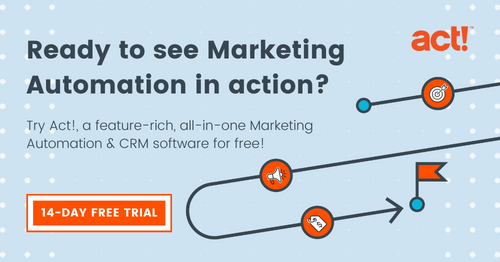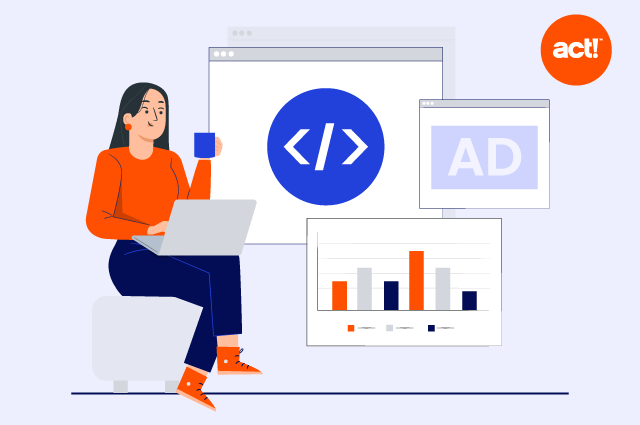
It’s well established that marketing automation helps businesses drive growth. In fact, businesses using marketing automation have experienced a 451 percent growth in qualified leads as marketing automation tools increase lead engagement and improve sales and marketing alignment and productivity.
Marketing automation software helps businesses with all of their customer experience and marketing efforts including email marketing, content marketing, and SEO, all of which improve their customer journey and shape their marketing strategies. This also helps businesses identify and retain the right customers, improve brand awareness and loyalty, and build resilient customer relationships that provide repeat sales and increase business revenue.
With all of these benefits, it isn’t surprising that the global marketing automation market size reached $5.2 billion in 2022 and is projected to exceed $9.5 billion by 2027. Given this fast-growing market, it’s crucial to stay on top of the latest automation trends so that your small business can take advantage of those new developments.
In this article, we’ll delve deeper into the top marketing automation trends that deserve your attention in 2023. But let’s first take a closer look at the present state of marketing automation.

An overview of marketing automation in 2022
As mentioned earlier, marketing automation is currently a multi-billion-dollar industry. And over the years, its applications have broadened from automating email campaigns to lead capture, content optimization, and more.
With the advent of artificial intelligence (AI) and machine learning (ML), you can give your small business the edge when it comes to marketing. And guess what? Numerous companies are already using it. In a recent Statista survey, 32 percent of respondents reported using a combination of marketing automation and AI for paid advertising.
Marketers use marketing automation to improve other aspects of digital marketing, from keyword research and SEO to social media marketing. More than 20 percent of respondents to the survey also use marketing automation to personalize email subject lines.
If you’ve missed out on this trend, you risk lagging behind your competitors.
Marketing automation trends for 2023

In 2022, we saw small businesses and marketers amp up their use of automation. If you’ve missed out on it, here are trends you need to know going into 2023.
1 Funnel-optimized content
Personalization is one of the hottest digital marketing trends, and customers demand it too. Eighty-seven percent of businesses say customers want some personalized content. In 2023, though, adding a recipient’s name to an email subject line won’t cut it. Nor will it be enough to deliver content recommendations based on the web pages a consumer visits.
Instead, you’ll have to take personalization up a notch by optimizing content for every stage of the sales funnel and for each consumer.
You can use marketing automation tools to understand your potential customers‘ needs and pain points by tracking their engagement with your website, emails, and content. As your messaging and deliverables evolve, engagement will improve and you’ll be able to easily see and monitor those metrics in your marketing automation software. In addition, you can leverage input from your sales and customer service engagements to capture insights into your audience’s needs by identifying trending questions or issues.
Once you’ve identified topics and content formats that will resonate with your prospects at specific stages in your sales funnel, you can use a marketing automation tool like Act! to build automated email workflows to send relevant content to your prospects.
Let’s say you’ve started an online trading platform. You can use Act! to automatically send an email with an e-book when a new lead opens your newsletter and checks out a blog post on stock trading. If they continue to engage with content related to stock trading, you can gently nudge them to sign up for a free trading account on your platform. Similarly, if a lead seems more interested in crypto trading, you can share content related to that.
With Act!, you can monitor how each prospect interacts with your email campaigns and automatically send additional funnel-optimized content like on-demand webinars, whitepapers, or video content, or you can schedule follow-up actions like phone calls and meetings.

2 Data-driven decision-making
Successful marketing campaign execution involves a series of critical decisions. From the layout of an infographic to the color of a call-to-action (CTA) button—your choices dictate the campaign’s future.
But these decisions have to be backed by hard data. Instinctively changing elements won’t work as well as data-backed decisions would.
While data-driven decision-making has already made its way into how many businesses operate, this trend is expected to accelerate further in 2023, with more small businesses adopting it. In fact, establishing a data-driven business culture was already the second-highest priority for businesses this year.
Marketing automation provides you with real-time metrics on user activity and campaign performance and lets you a/b test to fine-tune your messaging, creatives, and campaigns. That, in turn, helps you understand what elements of a campaign resonate with the audience and which need improvement. You can use this information to guide your next campaign or optimize the current one.
3 Lead capture
Lead generation and nurturing is perhaps the most important stage in the sales funnel. It’s the step that can make all the difference in driving your conversions and revenue. But capturing and nurturing a lead is no easy task—and historically, it often involved a great deal of manual work.
But with marketing automation, repetitive, manual tasks are automated and 2023 will see the rapid adoption of automation at every step. With automation tools like Act!, you’ll be able to easily design high-converting landing pages with lead capture forms to attain important lead information like email addresses, names, and phone numbers. T
These forms can be integrated with your customer relationship management (CRM) software to ensure leads are captured, qualified, and nurtured.
When marketing automation is integrated with your CRM, lead information will transmit to the CRM automatically. You can then create further actions, such as sending follow-up emails. The CRM will also eliminate manual work by automating lead profiling and scoring based on their behavior and responses. It’ll also segregate prioritized leads automatically so you can follow up with them and turn them into customers.
This level of automation will help put lead generation on autopilot for businesses in 2023.
4 Seamless omnichannel marketing

The concept of omnichannel marketing isn’t new. Businesses use various channels, including social media, email marketing, search engines, video marketing, brick-and-mortar stores, and paid advertising, to reach and engage potential customers.
However, the reason omnichannel campaigns often fail is that they’re incoherent. 2023 will see small businesses use automation to implement integrated omnichannel marketing campaigns. From e-commerce and social media posts to in-store shopping, data unification and automation will pave the way for small businesses to drive sales from multiple channels while providing a consistent user experience.
You can start by using an integrated marketing automation and CRM solution designed specifically for SMBs, thereby allowing information to flow between sales and marketing functions. When a new lead is added to the CRM, you can use an automated email workflow to send a personalized welcome email.
For instance, if the lead comes through LinkedIn, you can send a formal welcome email inviting them to schedule a call with your sales team. On the other hand, if the lead comes through Instagram, you can use a friendly tone and encourage them to read your latest blog posts.
The way forward
The most significant marketing automation trends of 2023 involve using AI, ML, and data analytics to improve campaign performance, internal workflows, and productivity as well as increase customer engagement, repeat sales, and revenues. So, if you’re a small business owner with plans and marketing goals geared to outpace your competitors, you’ll want to leverage marketing automation in 2023 and the coming years.
Act! is an all-in-one, affordable marketing automation and CRM software that integrates with apps like QuickBook and Outlook that you’re already using. It is highly customizable and offers unparalleled flexibility to work the way you do, on-premises, in the cloud, or both, with Desktop Sync, on the go with Act! Companion, our mobile app. Want to see it in action? Start your 14-day free trial now. No credit card or download required.






